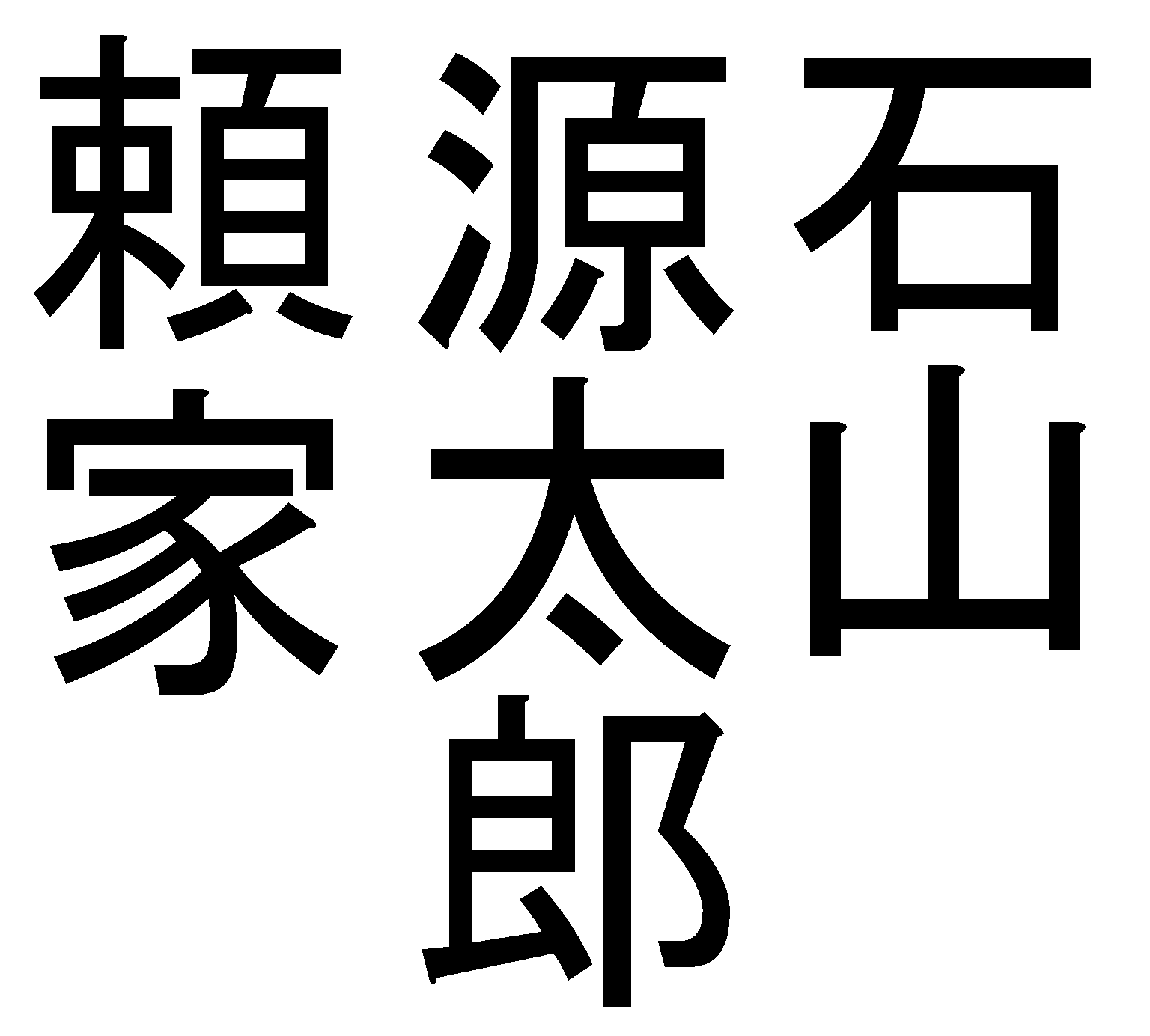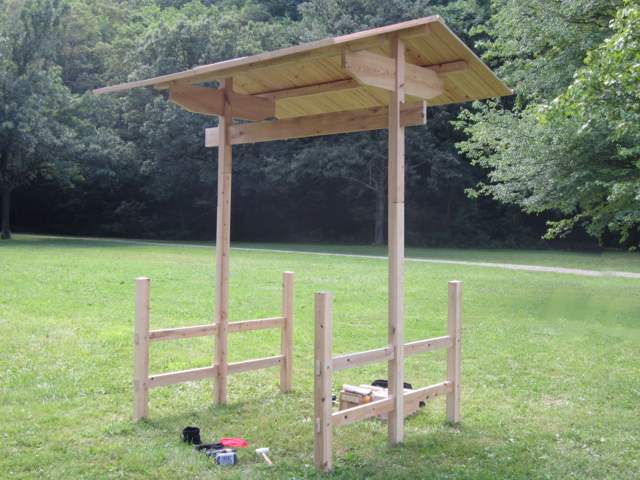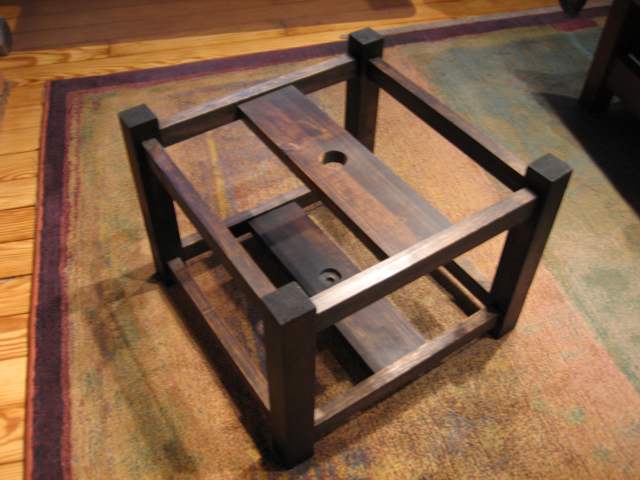
Mokkou -
The Woodworking of Japan
by Ishiyama Gen'tarou Yori'ie

In his woodwork, Ishiyama focusses on objects and furniture extant in the Momoyama period and earlier, especially items useful for travel and camping.
Individual projects are detailed as part of Ishiyama's mundane project pages and on his blog. Ishiyama also actively participates in Tousando, a web forum dedicated to Japanese historical recreation, where he posts about his own work and encourages others.
Notable Projects
Sukiyamon

I was asked to make a new camp gate for
Clan Yama Kaminari's encampment at the annual Pennsic War event.
I decided to pattern the gate on a Momoyama period garden gate
of a style that is still seen today in
Japanese sukiya (tea gardens).
Late SCA period was a time of peace in Japan,
and upper class courtiers and military officers often expressed
their wealth by adding luxurious gardens to their residences.
This sukiyamon is made entirely of cypress wood,
with extensive use of joinery for assembly.
While metal bolts and stakes make the assembled gate more secure,
this design could have been built without them.
The gate is nine feet tall,
and has not been treated or coated,
so it will age gracefully over time.
Karabitsu

I have made a number of these footed storage chests.
While most of these karabitsu are modern in construction
this particular karabitsu is handmade entirely from cypress.
They were quite common in Japan back to ancient times.
They were used for transporting and storing
food, scrolls, armor, and ritual objects.
While I started from commercial lumber,
all the shaping and joinery in this project was done by hand,
including the legs and assembly pegs.
Hatadai

Depending on who you talk to,
this type of banner stand might be called a hatadai,
hatazaotate, or daiwaku.
It is a "portable hole", used to hold banner poles
and other display items vertical while indoors.
this one is made from pine wood,
colored using a home made natural stain,
and finished with boiled linseed oil.
All of the mortise and tenon joints used for assembly
were cut by hand.
Shogi

These folding stools also reach back into ancient times,
and were also apparently an imprt to Japan from China.
One interesting thing is that traditionally you sit on them
facing towards the horizontal bars,
not facing towards the crossed legs.
I've made four of these stools,
though the pictured one uses most hand tool work.
In later stools,
I actually figured out a nicer hinge pin that matches the brass
of the reinforcement strips.
Kumihimo Equipment and Accessories

Some people tell me that these braiding stands are late period,
though others say they are not period at all. In any case, the round
braiding stand enables us to recreate period braids. I have made more
than a dozen of these stands, as well as the tama bobbins,
thread management items, and equipment storage boxes.
Class Handouts
Shogi Folding Stools
Shôgi are folding stools that date to ancient times in Japan. Originally, they were used in the field by military commanders. Over time they gained popularity as garden furniture, for any time you don’t want to sit on the damp ground. They are still used today as formal seating for events or religious ceremonies, as well as historical recreation. These stools can be built rapidly at home using dowels, 1-by lumber, basic hardware, and fabric. This class explains the basic process, and demonstrates two ways of forming the join between the crossbars and the legs.
Taught at Pennsic 49 in August of A.S. 56
Kyousoku Armrests
While it is not true that the Japanese did not know about furniture (They had imported the idea of tables, chairs, desks, and other items from the mainland during the eighth century Nara period.) it is true that they have always been primarily a floor-seated culture. Starting with the high-culture of the Heian period in the ninth century, Japan returned to its traditional roots and it basically stayed there until modern times. Now this does not mean that Japan did not have any furniture, just that much of the indoor furniture was designed for the benefit of one seated on the floor. Perhaps one of the most interesting pieces is the kyousoku arm rest. This class shows examples of kyousoku, and diagrams some of the tricker details of the traditional joinery I used in my example.
Taught at Pennsic 47 in August of A.S. 52
Zen Tray Tables
One of the most varied types of floor furniture are the low tray-tables that are generally called zen. A zen is a tray, often lacquered, that has some kind of base that raises it a bit closer to the diner, and enables the fingers of the serve to get below the tray when it is being placed on or lifted from the floor. This class presents images of several varieties of zen, and descibes a method for making a basic zen from thin plywood.
Taught at Pennsic 47 in August of A.S. 52